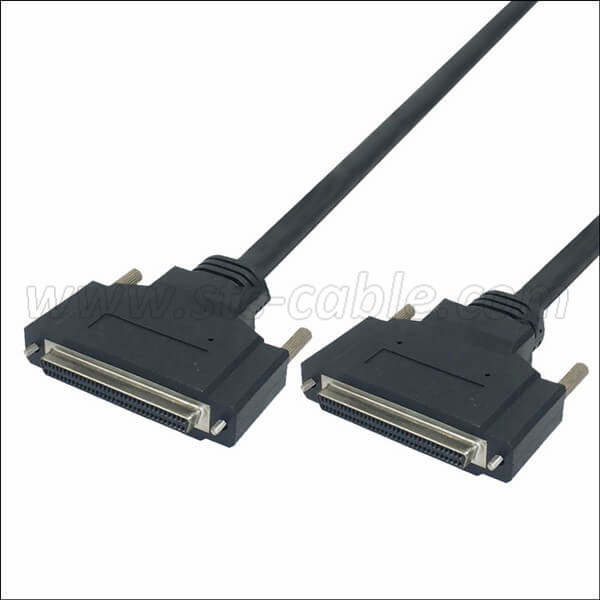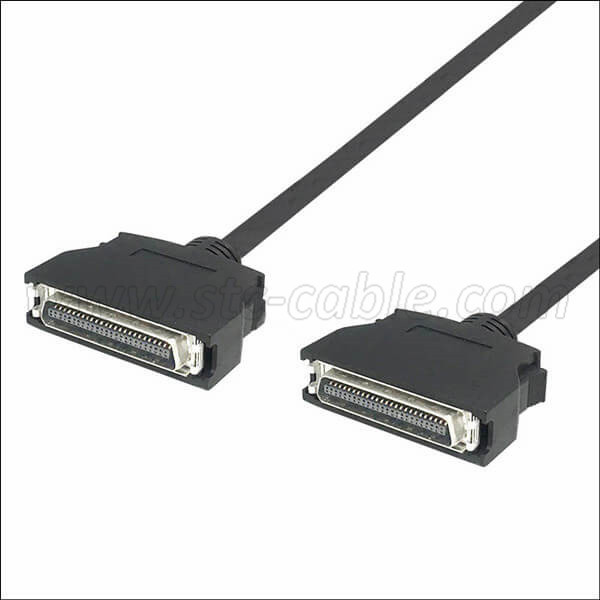SCSI (Small Computer System Interface) is an infrastructure designed to control a broad range of devices, including hard drives, CD-ROMs and printers, and scanners. SCSI data cables act as an essential intermediary between computers and peripherals to provide a high-speed bus connection between each one. We’ve compiled a complete guide to SCSI data cable uses to explain more about the infrastructure and accessories.
SCSI cables are used for high-speed bus connections between small computers and intelligent peripherals such as hard disks, printers, and optical disks. SCSI stands for small computer system interface, a set of standards for physically connecting computers to peripherals and transferring data.
What Is SCSI?
SCSI is a high-speed smart bus managed by a microprocessor that enables you to link up to 15 external devices to your computers, like printers and hard drives, using data cables. The process uses a controller to deliver and receive data and power back and forth between the SCSI-enabled peripherals.
A high-quality single SCSI board can have two controllers and accommodate up to 30 peripherals on one expansion card. SCSI has the advantage of allowing you to join multiple peripherals to a single host adapter while only occupying one bus slot.
BENEFITS OF SCSI
SCSI defines optical and electrical connectivity and its instructions. Contemporary SCSI can also handle serial communication at higher data speeds with better fault association, enhanced cable connections, and a greater range.
BRIEF HISTORY
The original SCSI (SCSI-I) version was an 8-bit iteration with a 5 Mbps transmission speed, allowing you to link up to eight devices via a 6-meter connection. This system had developed from an earlier one called Shugart Associates Systems Interface (SASI) beginning in 1979.
The American National Standards Institute (ANSI) formally adopted this version in 1986. The most recent version, 16-bit Ultra-640 (Fast-320) SCSI, came out in 2003. It offers a transfer rate of 640 Mbps while connecting up to 16 devices via a 12-meter connection.
Fun Fact
The correct pronunciation of SCSI is “scuzzy,” believe it or not. Marketing people tried to shift the predominant pronunciation over to sexy, but it didn’t take, to their dismay.
Types of SCSI Cables
The database contains information about these types of SCSI cables.
1>SCSI-1 allows asynchronous data transfer rates of 1.5 Mbps and synchronous transfer rates up to 5 Mbps. SCSI-1 has an 8-bit port that uses a 50-pin connector and single-ended, open-collector drives.
2>SCSI-2 has faster data transfer rates, better connectors, a wider bus path, parity checking, and better reliability via synchronous negotiation.
3>Ultra2 SCSI or Fast-40 has a bus speed of 40 MHz. Narrow (8-bit) buses have a maximum data transfer rate of 40 Mbps. Wide (16-bit) buses have a maximum data transfer rate of 80 Mbps.
4>SCSI-3 allows for faster data transfer rates and the use of up to 32 devices on a single chain. It incorporates serial connections in addition to the traditional parallel interconnect of SCSI-2. The serial interconnect of SCSI-3 incorporates three technologies: serial storage architecture (SSA), Fibre Channel, and IEEE P1394. The serial transfer mode allows faster data rates, more devices per bus, simple connectors and longer cables.
5>Ultra3 SCSI (Fast-80, Ultra160) has a bus speed of 80 MHz. Wide (16-bit) buses have a maximum data transfer rate of 160 Mbps.
6>Ultra320 SCSI has a maximum data transfer rate of 320 Mbps for the wide (16-bit) bus.
7>Serial SCSI is a very fast bus standard that supports data transfer rates up to 400 Mbps. It is a subset of IEEE 1394 or FireWire
SCSI, or Small Computer Systems Interface, is technology designed to connect smaller devices to a computer. SCSI is bus technology, which means that all devices connect to a central bus and are "daisy-chained" together. The SCSI bus is controlled by a host controller which will typically be built into the motherboard, or it can be from a separate expansion card. Either external or internal, the cabling/connector requirements for an SCSI connector depend upon the location of the bus. SCSI uses three different signaling types, Single-Ended (SE), Differential (HVD or high-voltage differential), and LVD (or low-voltage differential). The most important things to remember when selecting your SCSI cable is the type of connector required by your devices, and if the location of the cable is internal or external.
Send your message to us:
Post time: Oct-17-2023


